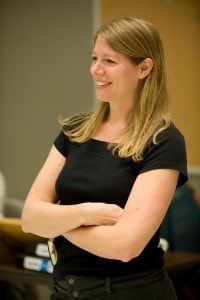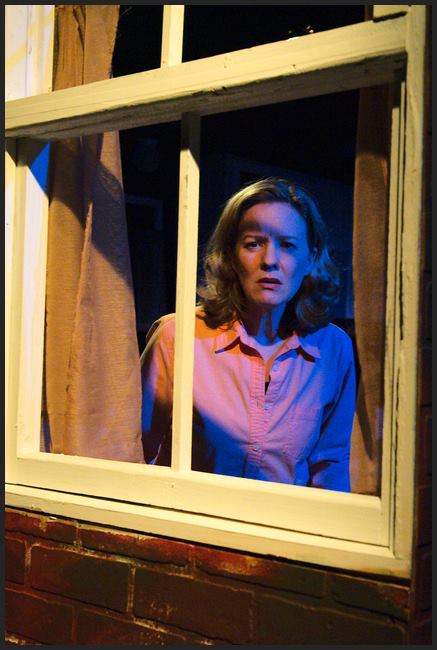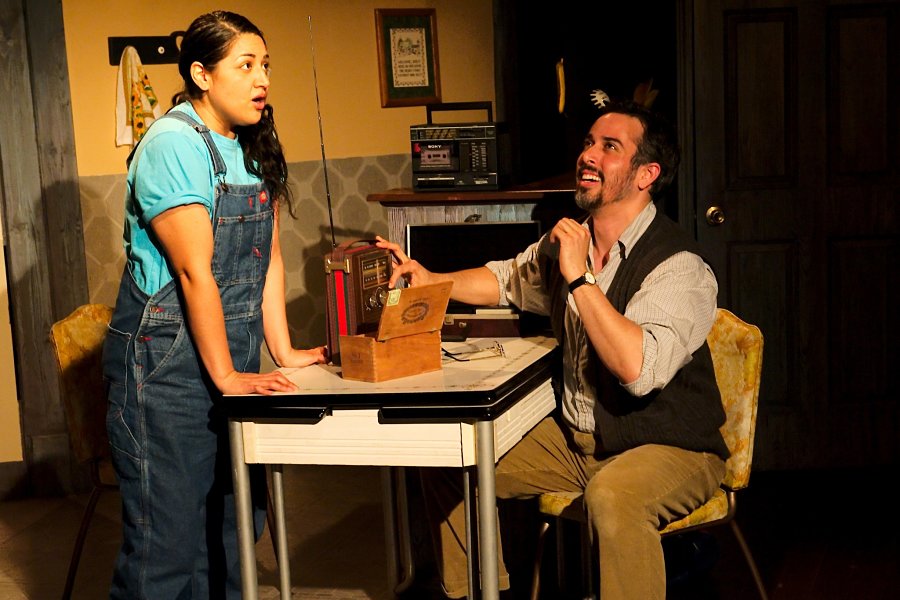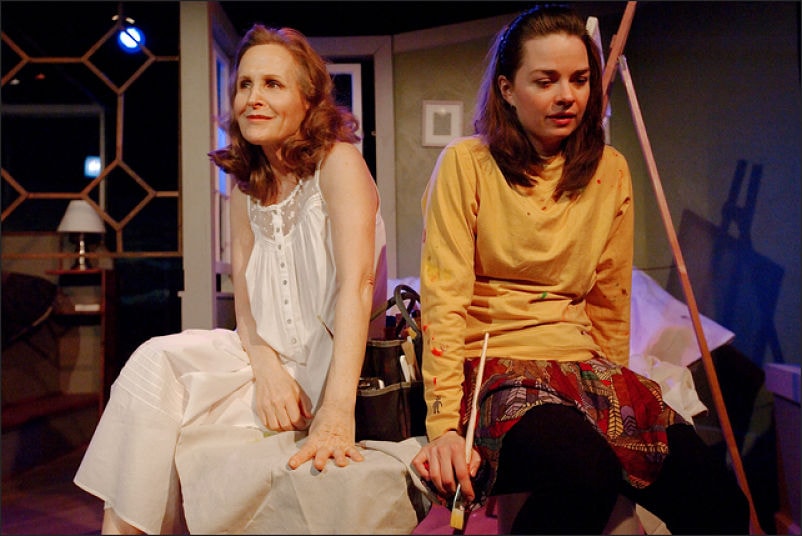BERWYN, ILL.: What we outsiders think of as “Chicago theatre” includes by rights a passel of outliers in nearby Evanston, Skokie, Glen Ellyn, Oak Brook and Berwyn. The last name on that list is where the 8-year-old 16th Street Theater plies its wares, for a small community otherwise unserved by a professional theatre. The emphasis at 16th Street is on new work and affordable tickets, but artistic director Ann Filmer evidently doesn’t skimp on quality: 16th Street was named best emerging theatre by Chicago magazine in 2013.
We reached Filmer while she was in the midst of rehearsals for Stephanie Alison Walker’s The Art of Disappearing, now onstage there through Feb. 28.

Who founded your theatre, when, and why?
I founded 16th Street Theater in 2007, the same year my husband and I left the city of Chicago in order to afford a home for our family of three. We followed other musicians and artists who had gone before us to Berwyn, a city of 56,000 located just half a mile from Chicago’s west side border and Austin neighborhood, with historical Oak Park just north. We decided we wanted to spend our creative energy on the community in which we lived—why should only our city centers have all the cool culture? Why can’t we make our own here? So that’s what we did.
The Berwyn Arts Council introduced me to Joe Vallez, the visionary head of the North Berwyn Park District, who believes not all kids are interested in baseball or soccer. Inspired by Chicago’s storefront theatres, the park district had just completed a 49-seat proscenium in the basement of city building. Serendipity. When Joe and I met for the first time, I said, “You have a theatre; I want to run a theatre.” With a shared vision that every town should have its own theatre, one that represents and speaks to its residents, 16th Street was born.
What sets your theatre apart from others in your region?
16th Street is a professional theatre for the community. Dedicated to playwrights and new work which engages our community, 16th Street is the most affordable union house in the state of Illinois, with a top ticket price of $18. We believe a majority of people are shut out of going to the theatre because of high ticket prices, which is why we want to make theatre inclusive and affordable for all. At the same time, artists are skilled workers who must be paid for their craft, so it was important to me to become an Actors Equity Association theatre our first season.

Who is your audience?
We draw the majority of our audience from the diverse, working-class communities of Berwyn and Oak Park, but we have audience members who come from all over Chicago as well as its western suburbs. Many of our patrons are people who were not going to the theatre until one opened in their neighborhood.
Tell us about your favorite theatre institution other than your own, and why you admire it.
Just one? Impossible. I was recently turned on to the Civilians and after being blown away by Mr. Burns, a post-electric play at Playwrights Horizons, and afterward wanted to pack up and follow them around. One of my favorite Chicago theatres is Red Orchid, who can do no wrong, but there are so many young companies here doing such exciting work! In terms of big institutions, Chicago’s Goodman Theatre, whose doors are open to all types of theatre and storytelling. The risks they take while still being totally accessible are inspiring. The support they give to artists of all backgrounds is felt among the entire theatre community here.
How do you pick the plays you put on your stage?
I ponder: What is our community concerned about? What are we not talking about but should be talking about, or what are we talking around but are too afraid of to dive in?
What’s your annual budget, and how many artists do you employ each season
$175,000 annual budget; we contract approximately 75 artists per year.
What show are you working on now? Anything else in your season that you’re especially looking forward to?
We begin previews for the premiere of Stephanie Alison Walker’s The Art of Disappearing this week, which I am directing. It is an incredibly moving portrait of a family trying to put itself back together when their estranged daughter comes home unexpectedly for brunch to find a home where nothing is as it seems.
I am really looking forward to the premiere of Aline Lathrop’s Merchild, about an 8-year-old transgender child named Adam who dreams of being a mermaid and marrying a prince. Adam’s family struggles with how to keep their child safe or giving him the freedom to be who she is.

Strangest or funniest thing you’ve ever seen (or put) on your stage?
The funnest challenge was during Andrea Thome’s Pinkolandia last year. We decided it was important to have Tio, played by actor Miguel Nunez, to make from scratch and cook a crepe on stage, as opposed to having a readymade crepe set aside to swap in. There are only four ingredients in crepes, so that was easy—but we don’t do realistic sets. Our brilliant props artist Jesse Gaffney found a plug-in crepe maker. There was a lot of rehearsal, mess and eggs. Actress Maritza Cervantes was the unfortunate one who had to take a bite of it each night.
What are you doing when you’re not doing theatre?
Oh?! I’m sorry…is there something else besides theatre I am supposed to be doing?
Yoga keeps me sane and grounded. Spending time with my 9-year-old daughter Hannah and my husband, musician Barry Bennett. Our favorite pastime is visiting family in California and North Carolina to remember what mountains look and smell like.
What does theatre—not just your theatre, but the American or world theatre—look like in, say, 20 years?
It will continue to reflect our world, our lives and our society, but there will be more voices at the table. It will continue to be the church of the imagination—a church where we do not all have to believe in the same things. It will challenge and inspire and provoke and feed the imaginations of our society.


